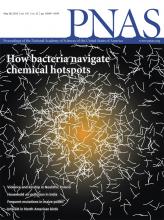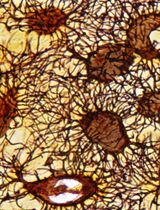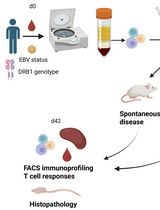- EN - English
- CN - 中文
Method for Measuring Mucociliary Clearance and Cilia-generated Flow in Mice by ex vivo Imaging
小鼠中黏膜纤毛清除和纤毛产生流动的离体成像检测方法
发布: 2020年03月20日第10卷第6期 DOI: 10.21769/BioProtoc.3554 浏览次数: 4895
评审: Andrea PuharValerian DORMOYAnonymous reviewer(s)

相关实验方案

基于TruCount™微珠的肠上皮内淋巴细胞绝对计数标准化流式细胞术方法
Corentin Joulain [...] Salima Hacein-Bey-Abina
2025年05月05日 2083 阅读
Abstract
Ex vivo biophysical measurements provide valuable insights into understanding both physiological and pathogenic processes. One critical physiological mechanism that is regulated by these biophysical properties is cilia-generated flow that mediates mucociliary clearance, which is known to provide protection against foreign particles and pathogens in the upper airway. To measure ciliary clearance, several techniques have been implemented, including the use of radiolabeled particles and imaging with single-photon emission computerized tomography (SPECT) methods. Although non-invasive, these tests require the use of specialized equipment, limiting widespread use. Here we describe a method of ex vivo imaging of cilia-generated flow, adapted from previously reported methods, to make it more accessible and higher throughput for researchers. We excise trachea from mice quickly after euthanasia, cut it longitudinally and place it in an inhouse made slide. We apply fluorescent particles to measure particle movement under a fluorescent microscope, followed by analysis with ImageJ, allowing calculation of fluid flow generated by cilia under different conditions. This method enables ex vivo measurements in tissue with minimal investment or special equipment, giving opportunity to investigate and discover important biophysical properties associated with ciliary movement of the trachea in physiology and disease.
Keywords: Cilia (纤毛)Background
The composition of diverse biophysical properties, each aiding a specified function, make up the human body. A key example of this is the generation of flow in many different organ systems, including the central nervous system (Olstad et al., 2019), reproductive tracts (Afzelius et al., 1978; Yuan et al., 2019) and the pulmonary system (Satir and Sleigh, 1990), made by specialized ciliated cells. Understanding how the environment or external stimuli affect these processes can give us insights into disease. In our recent study (Kudo et al., 2019), we explored how humidity affects influenza infections in a mouse model. By using this method of ex-vivo measurement of cilia-generated flow in mice, we were able to visually measure how ambient humidity altered the rate of virus clearance (Figures 1 and 2). Previous studies have used radiolabeled particles to measure mucociliary clearance using a noninvasive method (Hua et al., 2010; Bustamante-Marin and Ostrowski, 2017). However, this requires the use of radioactive materials and SPECT or other machines to measure radioactivity that may not be readily available. Measurements like this can be made more accessible using ex vivo imaging of particles in tissue (Nance et al., 2012; Francis and Lo, 2013; Mastorakos et al., 2015 and 2016). Here, we describe a detailed method of measuring the flow generated by cilia in upper airway tissue, adapted from Francis and Lo (2013). Our method is easy to perform and allows for measurement of large numbers of mice at a relatively low cost. This protocol can also be performed in a short time, allowing for the preservation of biological differences and measurement in a large number of animals. Finally, it can be adopted for other organ systems or tissues, measuring various biophysical properties, as shown by Nance et al. (2012), in identifying what criteria drug loaded particles must meet to navigate through brain parenchyma. Altogether, this protocol will provide researchers with an easy to follow, step-by-step methodology to measure properties of biological tissues ex vivo (Figure 3).
Materials and Reagents
- Superfrost Plus Gold Slides (Thermo Fisher Scientific, catalog number: FT4981GLPLUS ). Brand is not critical
- Square Cover Slips (Thermo Fisher Scientific, catalog number: 18X18-1 ). Brand is not critical
- Electrical tape (3M Safety, Scotch, Purchase in Amazon). Brand is not critical
- FluoSpheres carboxylate, 0.2 μm crimson, 625/645 (Life Technologies, catalog number: F8806 ) Alternate sizes/chemistry can be used depending on experimental design, refer to background above
- 6-well plate (Fisher Scientific, Corning). Brand is not critical, does not have to be tissue culture quality
- Mice
- PBS (Millipore Sigma, catalog number: D8537 ). Brand is not critical
- Super glue (Loctite, Purchase in Amazon). Brand is not critical
- 1:1,000 volume/volume of FluoSpheres carboxylate in PBS (see Recipes)
Equipment
- Dissection scissors (Fine Science Tools, catalog number: 14061-10 ) Brand is not critical
- Electric Razor (Purchase from Amazon) Brand is not critical
- Hair removal product, Nair (Purchase from Amazon) Brand is not critical
- Forceps (Fine Science Tools) Brand is not critical
- Micro dissection scissors (Fine Science Tools) Brand is not critical
- Scalpel (Purchase from Amazon) Optional and brand is not critical
- Dissection microscope (Laxco, LMS-Z200) Optional and brand is not critical
- Bruker Opterra Swept Field Microscope (Bruker) Brand is not critical, microscope must be equipped with high-speed fluorescent camera (Photometrics Evolve Delta EMCCD camera)
Software
- Obtaining images Prairie View 5.4 (Bruker) Brand is not critical, any software associated with microscope will work
- Analysis Software ImageJ (Directionality, Mtrack2, Manual Tracking, NIH, https://imagej.nih.gov/ij/) Other software can be used for analysis
Procedure
文章信息
版权信息
© 2020 The Authors; exclusive licensee Bio-protocol LLC.
如何引用
Song, E. and Iwasaki, A. (2020). Method for Measuring Mucociliary Clearance and Cilia-generated Flow in Mice by ex vivo Imaging. Bio-protocol 10(6): e3554. DOI: 10.21769/BioProtoc.3554.
分类
免疫学 > 粘膜免疫学 > 上皮
免疫学 > 动物模型 > 小鼠
细胞生物学 > 组织分析 > 组织成像
您对这篇实验方法有问题吗?
在此处发布您的问题,我们将邀请本文作者来回答。同时,我们会将您的问题发布到Bio-protocol Exchange,以便寻求社区成员的帮助。
Share
Bluesky
X
Copy link












